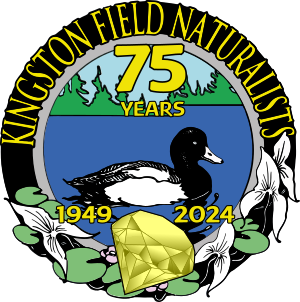Text and photos by Anthony Kaduck. Photos copyright 2021
Moscow Marsh is a very productive wetland site for birding. It is visited primarily during the spring and early summer. Moscow Marsh’s particular claim to fame is that is hosts a healthy colony of the hard-to-find Least Bittern.
Key Details
- Location: 30-35 minutes northwest of Kingston, on Moscow Road: 1200m west of the village of Moscow.
- eBird Hotspot: https://ebird.org/canada/hotspot/L1582331
- Admission charge: None
- Parking fee: None
- Facilities: None
- Accessibility: Poor – not suitable for wheelchairs
- Trails: Hard-packed gravel and grass trails. As the summer advances the trails become increasingly narrow because of encroaching foliage.
- Habitat: Wetland, surrounded by mixed forest.
- Users: Birders and bird photographers only. Not a desirable spot for families, runners or cyclists. Generally a quiet site – the likelihood of meeting other birders there is low even in the peak season.
- Best time to visit: Early mornings in May and June.
Site Overview
Moscow Marsh is not the place for a pleasant walk in the great outdoors. The large, rectangular marsh is densely packed with reeds, with a few open channels and ponds. It is viewed from a narrow path that runs along two sides, as well as from selected spots on Moscow Road. Along the path there are many points where the view is partially or wholly blocked by reeds and scrub, but you will find a few reasonably good viewing spots along both legs of the path.
The best time to visit Marshlands is an early morning in May or June, and this guide is focused on that time period. A visit in early August might be profitable as well, as the young Least Bitterns are less stealthy and shy than the adults.
Getting There
Moscow is a very small village – barely more than a crossroads – about 8km north of Yarker. From Kingston the typical route would be to take Highway 401 west, exit at interchange 599 (Wilton Road/Odessa), and proceed north on County Road 6. After passing through Yarker and Colebrook you will arrive at Moscow. Turn left onto Moscow Road and after about one km start looking for a small, unmarked lane to your left. The location is approximately 44.424101, -76.818802. It’s easy to miss. There is parking space for a couple of vehicles in the entrance.
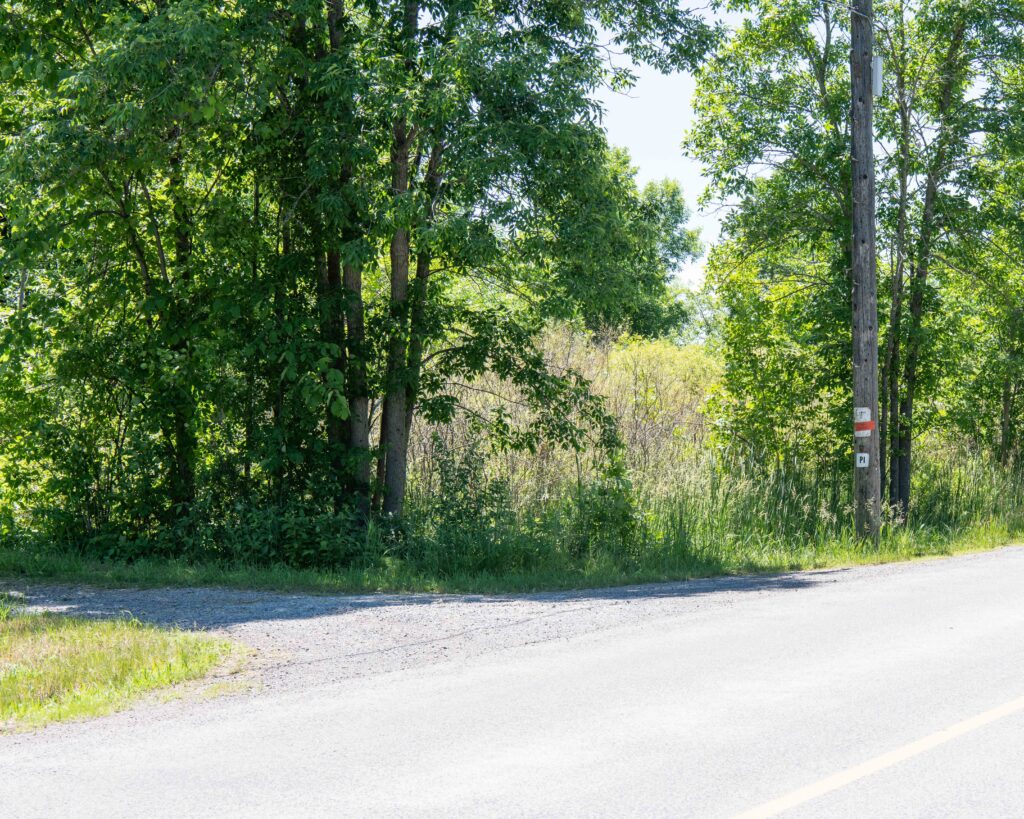
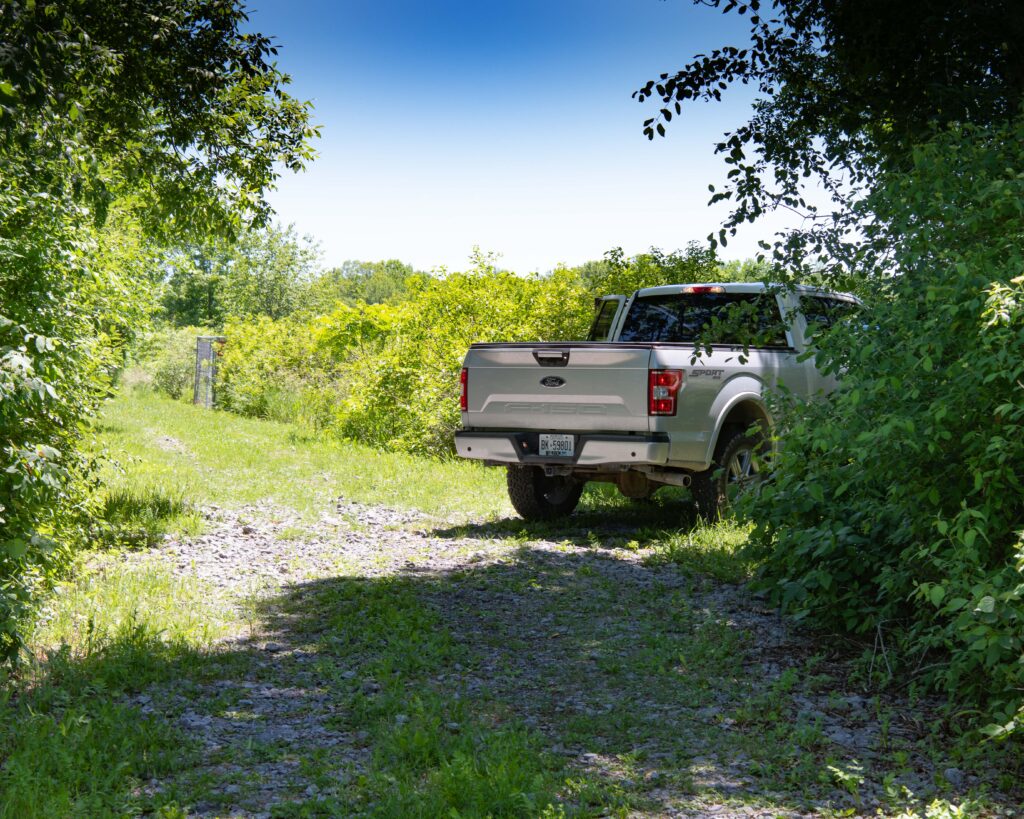
Site Guide
The trees above the entrance can hold Warbling Vireos and Baltimore Orioles, and there are often Grey Catbirds in the scrub on the east side. They will struggle to be heard above the din of scores of Red-winged Blackbirds and Common Grackles.
Upon arrival your first place to check is the long channel that runs along the side of the marsh paralleling the road. Approach this first viewing spot with stealth. Once they have arrived in late May, Least bitterns can fairly often be spotted on the edges of this channel. If you are lucky enough to see one enjoy the moment because they are very shy birds and will quickly melt back into the reeds or fly away.
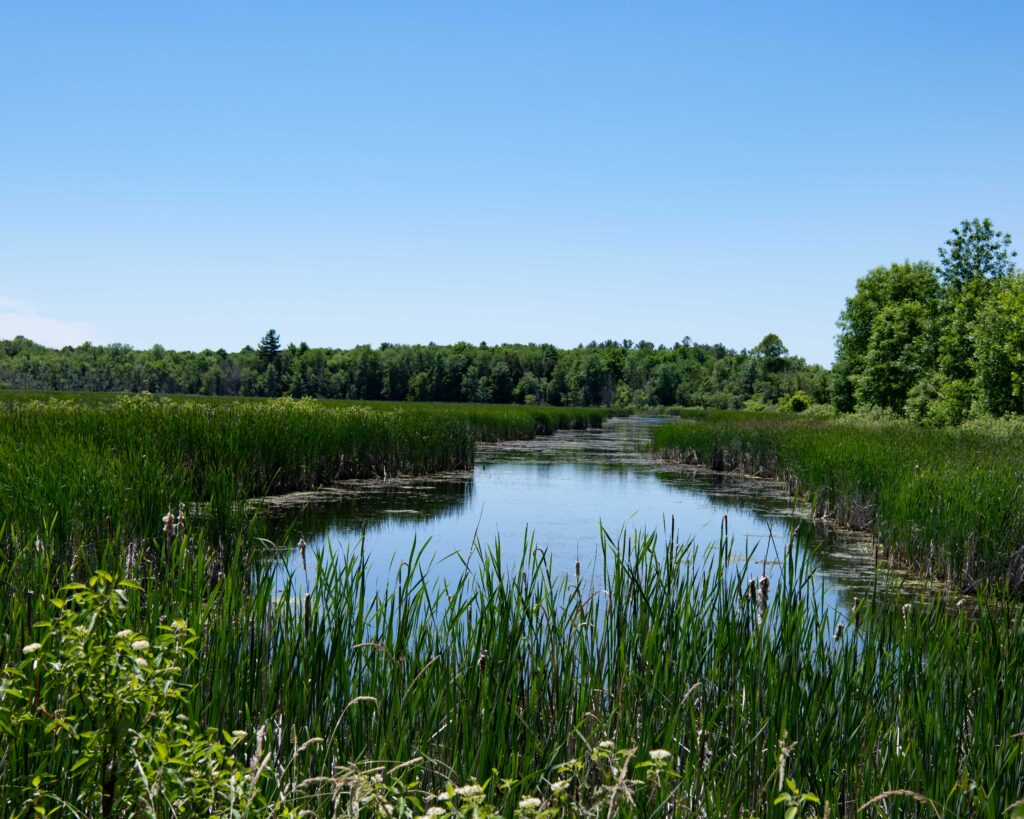
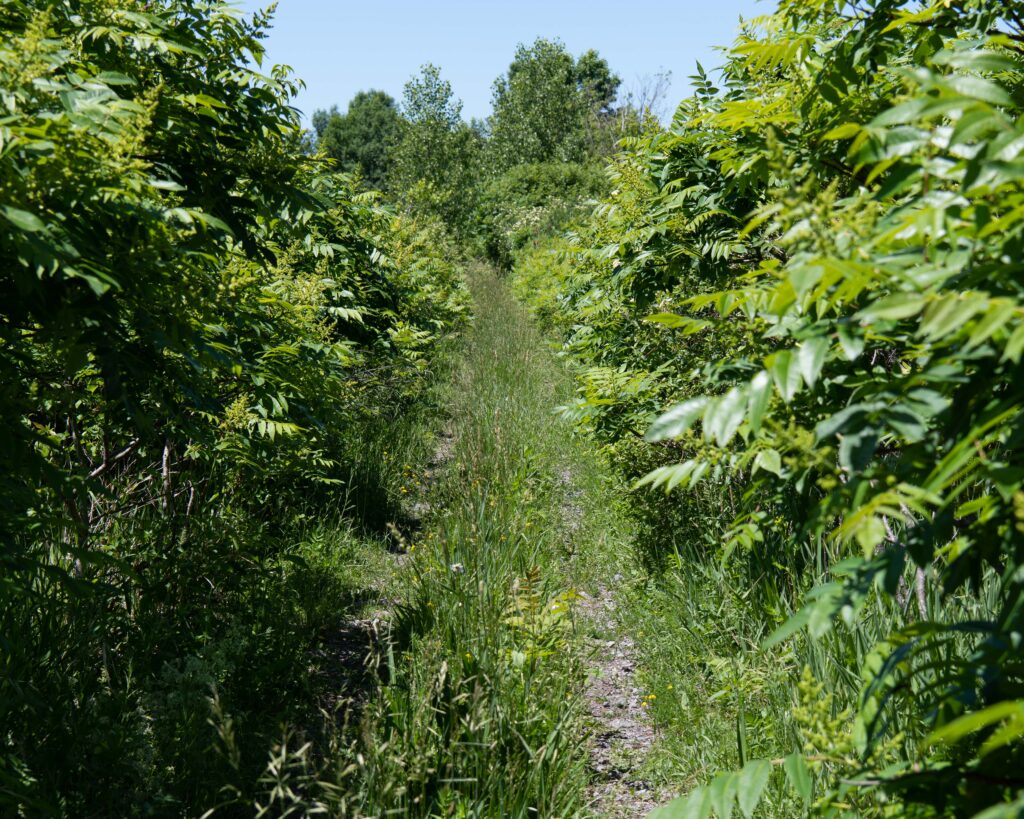
Now proceed south along the path. After 100m or so you will arrive at a junction. The marsh path turns right, and there is an opening in the forest where a track continues south. From a satellite image it looks like this path ends up at Park Road. I have not travelled down it because (a) it’s usually either muddy or very muddy, and (b) it’s not clear whether this path is part of the marsh site or leads onto private property. So I stick to the marsh path. The route is out-and-back, about 250m each way.
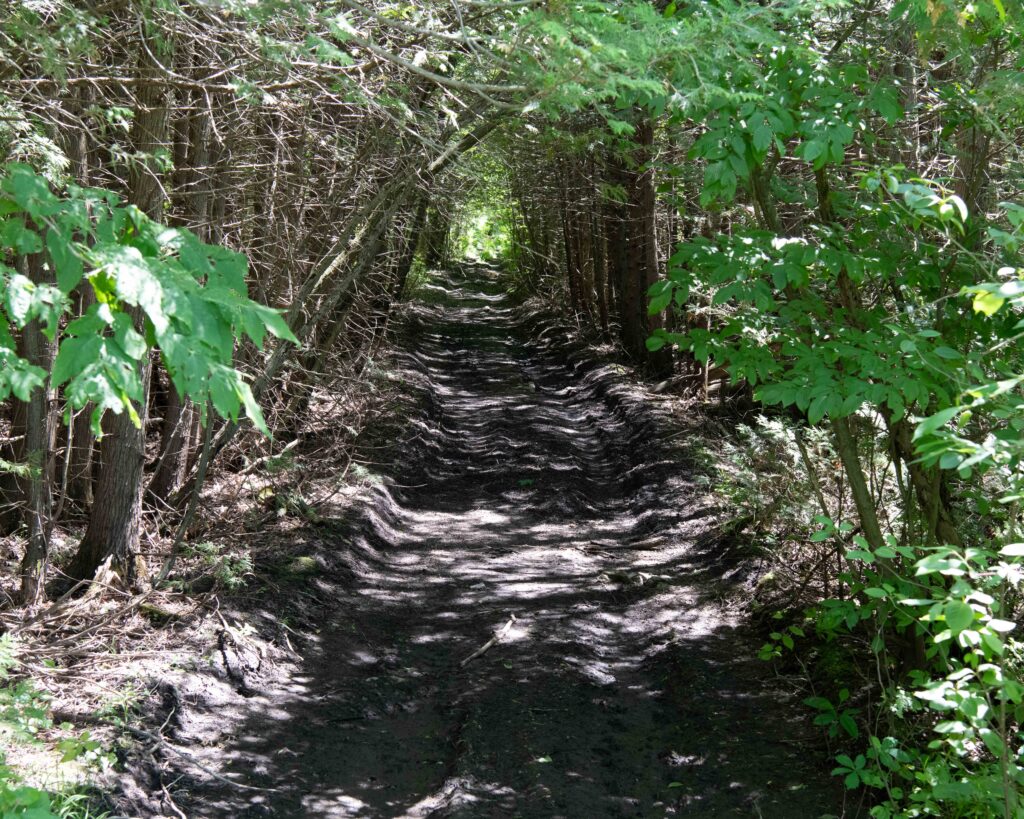
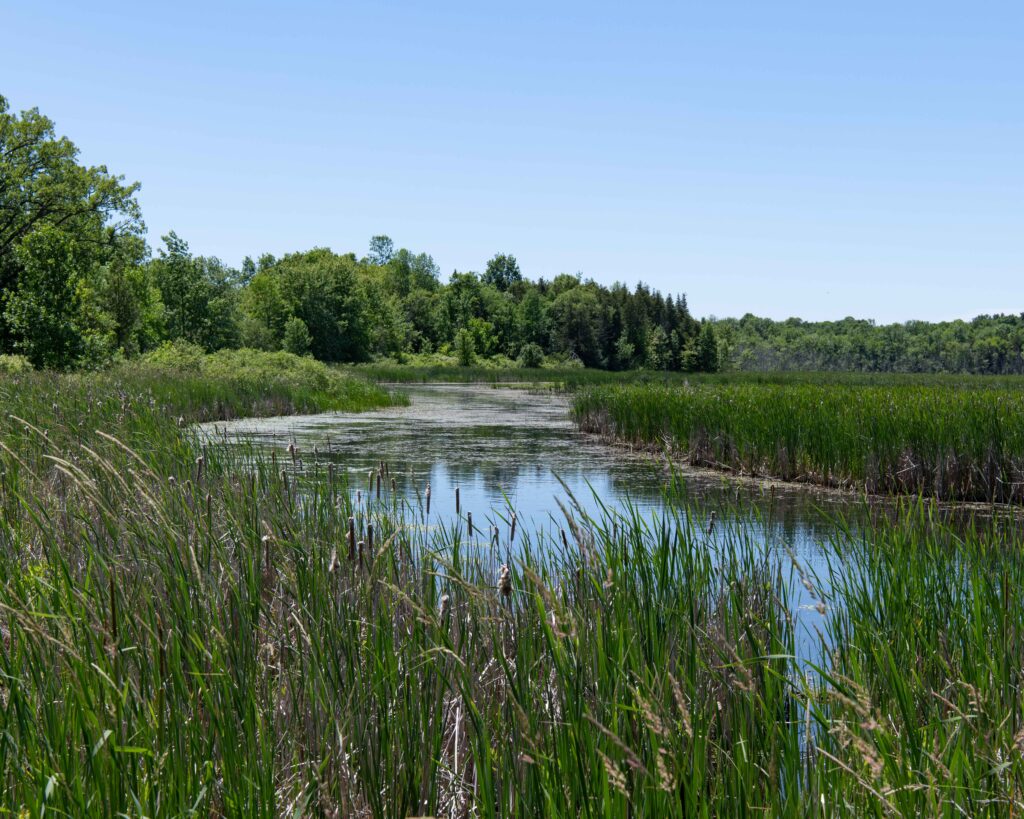
As you walk look and listen for a wide range of marshland birds. Swamp Sparrows are common here and you will often hear a dozen or more singing males. If you arrived early in the morning you may be treated to the booming call of the American Bittern. Virginia Rails start to arrive early in April and you will probably hear their weird grunting display or the “kiddick” call. By mid-May Marsh Wrens start to arrive and sing their buzzy songs. Pied-billed Grebes are frequently heard braying and hooting, and if you scan carefully you should be able to pick up one or two on patrol. Sora can be seen or heard in May but they do not appear to stay on. Look and listen as well for Common Gallinules.
The marsh is not known as a shorebird site, but Wilson’s Snipe appear to breed there so listen for their winnowing display call. If you hear it, look way up in the sky for a tiny dot with a long bill.
Perring through the foliage into the interior of the marsh you may find a range of waterfowl. Canada Geese can be plentiful, and Mute Swans, Mallards and Wood Ducks breed here. In April and May migrant ducks are regular visitors, particularly Ring-necked Duck, Blue-winged Teal and Bufflehead.
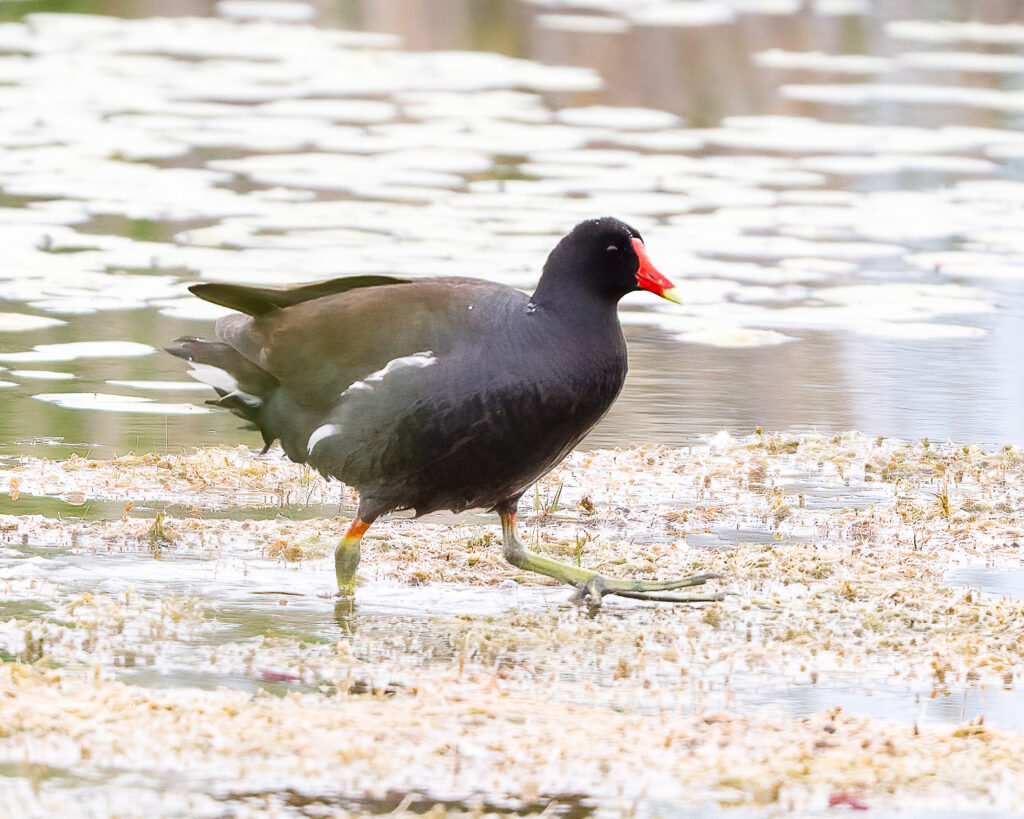
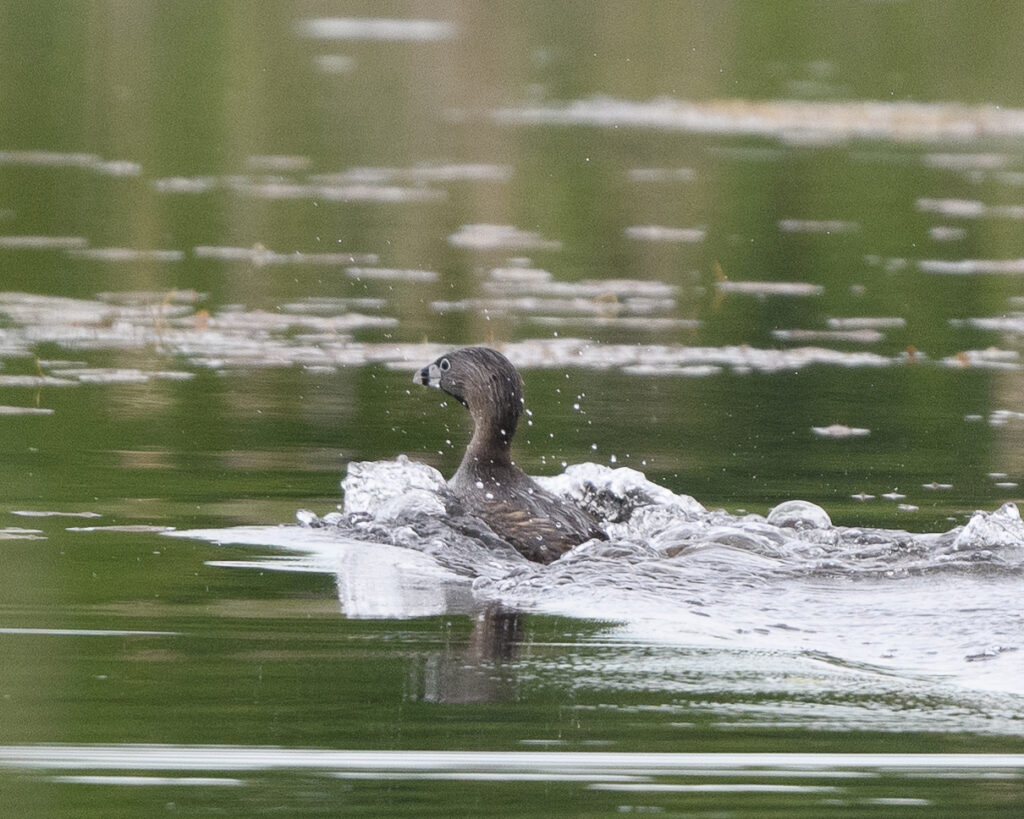
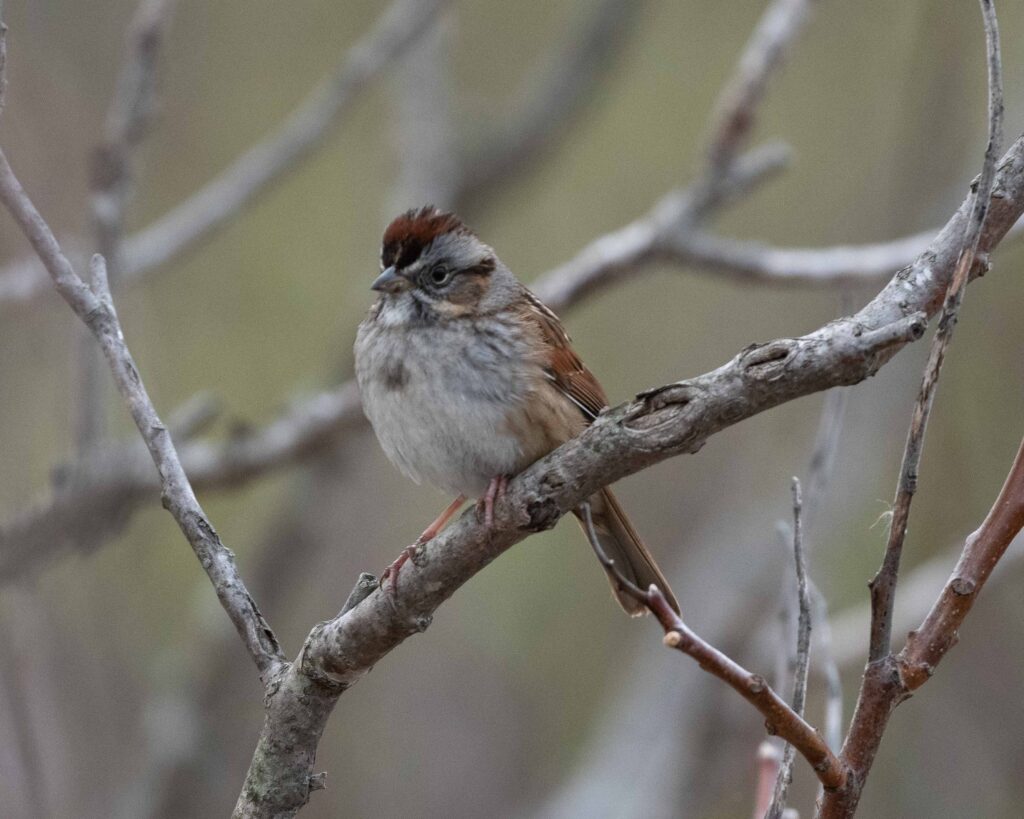
While gazing at the marsh don’t forget to glance upwards regularly. Ring-billed Gulls are usually floating around in small numbers but with luck you will see one or more Black Terns, most likely visitors from the breeding colony at Camden Lake. Tree and Barn Swallows are regulars. Raptors other than Turkey Vultures are infrequent but with luck you may see an Osprey, a Red-tailed Hawk or Northern Harrier – probably with Red-winged Blackbirds in hot pursuit. And though American Bitterns are more often seen than heard, they and Great Blue Herons can sometimes be spotted as they fly to a different part of the marsh.
Above all, keep an eye open for Least Bitterns. They can occasionally be spotted in the reeds, but your best bet is to see one or more skimming low above the marsh. Least Bitterns are very small herons with distinctive colouration. In flight you will see an orangey head and breast, white belly, dark underwing and a pattern of black and orange on the upperwing.
While the marsh is the main attraction, a good range of passerines can be found at this site. Yellow Warblers are plentiful and Common Yellowthroats are… common. Song Sparrows, American Goldfinch and American Robins are expected. A number of flycatcher species pass through the marsh on migration, although Eastern Kingbird is the only one that stays on to breed. Baltimore Orioles, Red-eyed Vireos, Northern Flickers and Rose-breasted Grosbeaks are frequently heard in the woodlands to the south.
Once you have completed your circuit of the marsh, it’s worth spending a few minutes along Moscow Road. There are spots where the interior ponds can be seen, though by early June these tend to be blocked by reeds. But there will be more Swamp Sparrows, Yellow Warblers and Red-winged Blackbirds, and when the water level is high enough the marshy patches along the road can hold Virginia Rail.
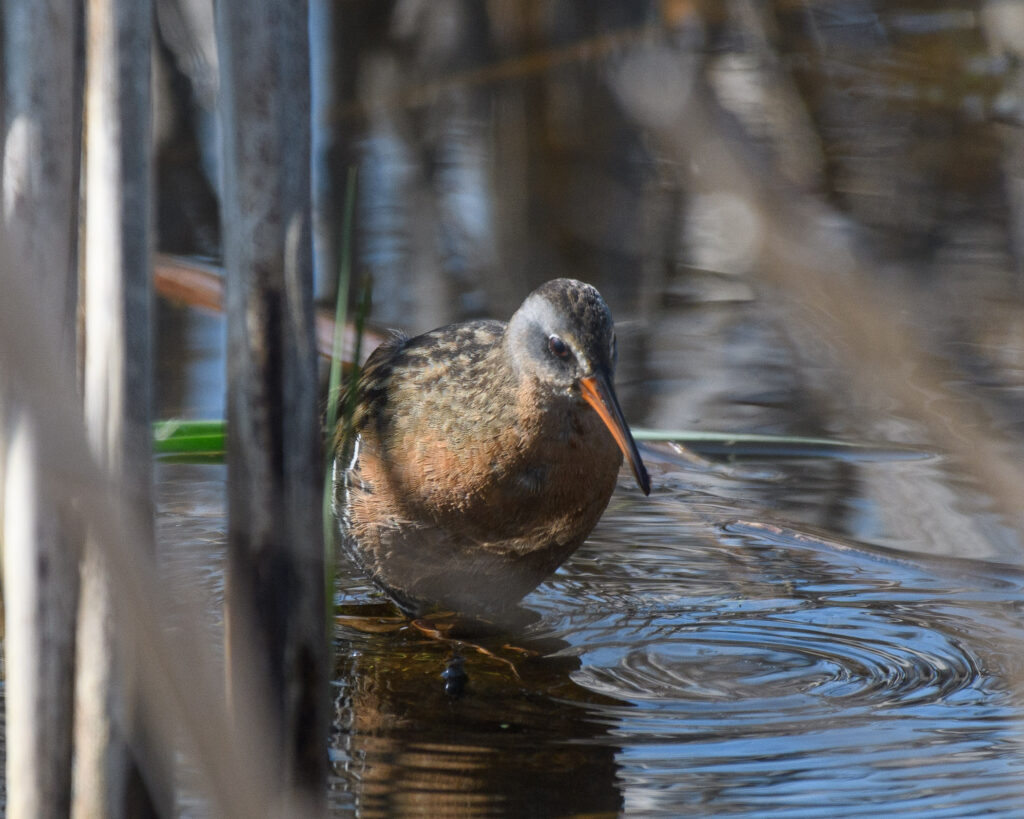
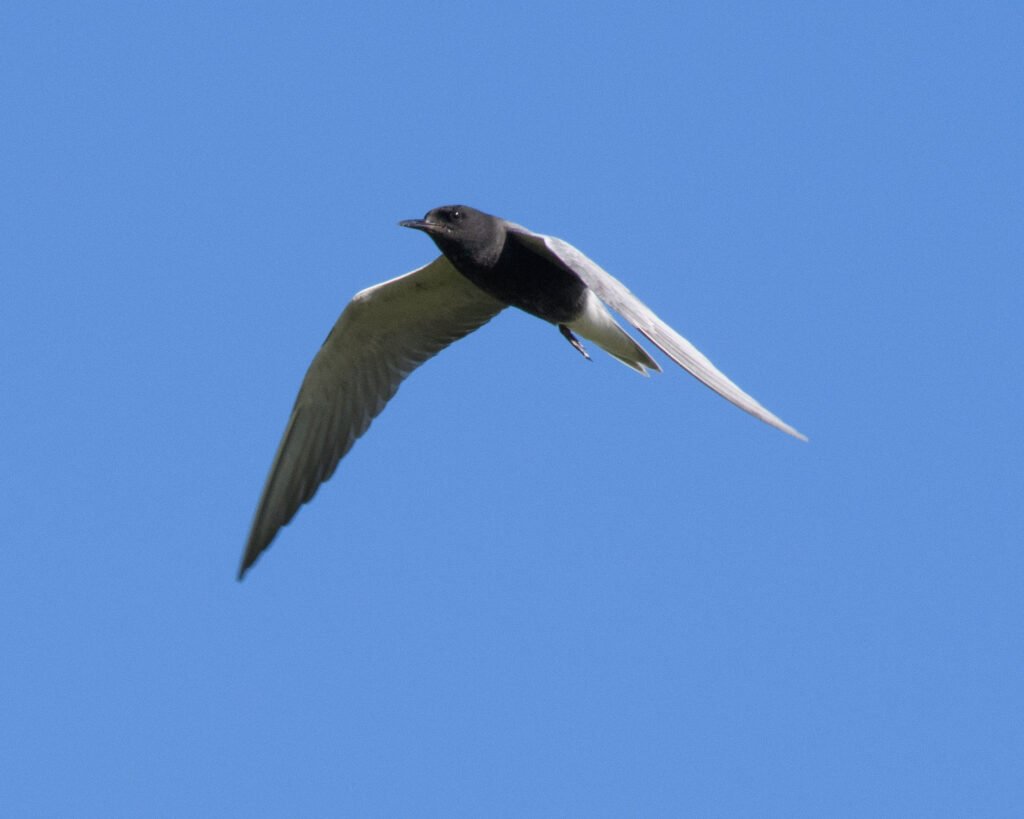
Having driven out to Moscow Marsh, it would be a shame not to go a bit further and visit Camden Lake – the subject of a forthcoming site guide.
